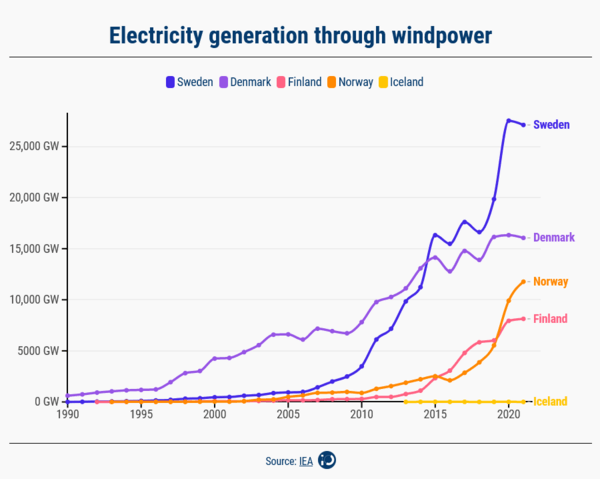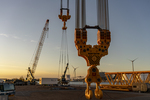News Release from windfair.net
Wind Industry Profile of
Wind power in Iceland? Still difficult!
Iceland is doing what everyone dreams of in these times of climate change: getting 100 percent of its electricity from renewable sources. Nearly 70 percent of the energy is covered by hydropower, and another 30 percent by geothermal energy. The country is also a role model when it comes to heating buildings: 90 percent of the energy for this comes from geothermal energy. What is striking is that the largest share of electricity - just under 80 percent - is consumed by industry, while only just under 20 percent is used by the country's inhabitants. The country's four aluminum smelters alone, which consume the lion's share, each have their own hydroelectric power plant.
Despite these impressive figures, the country's society has a high carbon footprint. That's because, according to Jeremy Firestone, a professor at the University of Delaware, there are some big producers of emissions in the country: commercial fishing, international air traffic that uses Reykjavik Airport as a stopover, the non-electricity components of the aluminum manufacturing process, and heavy tourism, which sees more than two million visitors a year for a population of about 387,000.
Firestone traveled to Iceland from the U.S. in January and March of this year to teach courses on wind energy at the university there and to discuss wind turbine siting policy with colleagues. So far, Iceland has been a blind spot on the wind energy map, with only two turbines generating wind power on the island, which actually has excellent resources. Firestone explains why there hasn't been much focus on wind power in Iceland so far: "It has been slow in part because of Iceland’s abundant hydro and geothermal resources. All its existing electricity needs are basically covered."

Wind energy has yet to play a role in Iceland. Here's how it compares to other Scandinavian countries where there is currently a boom on wind energy. (Source: Innovation Origins)
Nevertheless, in recent years there has been increasing discussion about using the advantages of wind power in Iceland as well. Among other things, electric vehicles are to be powered by wind energy in the future. One problem here is the country's outdated power grid, which is currently incapable of transporting large amounts of electricity. "In many locations, Iceland uses medium voltage power lines rather than high voltage lines for electricity transmission. This limits the ability to move electricity that could be generated by wind turbines to areas where electricity is and will be needed," Firestone said.
Another problem is people's fear of encroachment on nature: there are concerns about both species protection and the important tourism sector - even though the construction of many of the large-scale power plants powered by hydropower and geothermal energy has already had an impact here. One example of a controversial project in this context is the construction of the Karahnjukavirkjun hydropower plant in eastern Iceland, whose electricity is used primarily for Alcoa's aluminum smelter. The construction of the 690 MW project in 2007 created a reservoir with an area of 57 km². This resulted in the loss of large natural areas where reindeer used to spend their winters. In contrast, many Icelanders see the construction of wind turbines as the lesser evil.
Offshore wind power as an alternative to building turbines on land is also not without controversy. Apart from some analysis of its suitability a few years ago, the Icelandic government has not yet taken any steps to promote offshore wind, probably mainly to avoid conflicts with commercial fishing. In addition, species protection is also likely to play a role here, as the waters around the island are used by many birds such as puffins, as well as marine life such as whales.
The discussion about this alone is already progress and shows that something is moving. Consideration is also being given to siting turbines in the very south of Iceland's exclusive economic zone (EEZ), some 200 nautical miles from the coast. From there, the electricity could be transmitted by cable to the UK and fed into the European grid. This is likely to suit the Icelandic government, which says it is trying to lure international industry with the lowest electricity prices in Europe. In view of the European plans for a large-scale power plant offshore in the North Sea, which were recently discussed at a summit, it is therefore high time for Iceland to make a colorful dot out of its blind spot.
- Author:
- Katrin Radtke
- Email:
- press@windfair.net
- Keywords:
- Iceland, island, offshore, onshore, wind turbine, wind power, hydropower, geothermal, source, electricity


























